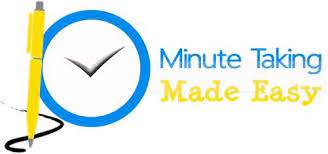Remember the game, Telephone, that we played as kids? One person would
whisper a message to the person beside them, and they would whisper it along
to the person beside them. When the message reached the end of the line and
the last person shared aloud what the message was, it was never the same as
the original. Everyone would laugh at the garbled end result.
That was fun.
The same thing has happened with your minute taking, only it isn’t fun. And for
your company, it can be downright problematic.
The good news is, it doesn’t have to be that way.
CTT: Minute Taking doesn’t have to be difficult. Check out some tips to make it
easier. LINK
The purpose of minutes is to provide a corporate history. To capture the
discussions, the decisions and the rationales made during a meeting.
Minutes are not meant to be a transcript of what happened at the meeting, and
that is exactly where it has gone off the rails for many of us. Minutes does not
equal transcript.
Most of us have been following the example of the person who did the job
before us, and she was doing the job the person previous to her had done.
That’s not fun. It’s probably wrong, too; and it will likely result in a garbled
Telephone mess. But no one will be laughing.
The rules for taking minutes have changed over the years, and if you are
following a confused version of what someone did years ago, no wonder you find
it difficult to take minutes.
CTT: The rules for taking minutes have changed over the years. Just because
that’s the way you’ve always done it doesn’t mean that is correct.
Keep in mind that your document needs to be a summary. That means you don’t
have to capture everything that is said, or even every topic that is discussed.
Ask yourself, “What will the company need from this document in the future?”
You can immediately get rid of all the social updates that occur during meetings
(births, marriages, etc.). While it’s perfectly acceptable for that type of
information to be shared in a meeting, the company will not need this
information from your document.
You can get rid of a lot of the discussions, too. We do need the rationale for
decisions that are made, but not necessarily all the discussion that came with it.
Summarize the discussion. There is no need to capture word for word what was
said.
The company also doesn’t care what Bob said, or Mary said. This is without a
doubt the most common mistake minute takers make. The company is not
concerned with Bob’s brilliant oratory. (Bob’s ego may be fascinated by what Bob
said, but the corporate history is not interested.)
Keep it simple. Keep it brief. Summarize it.
Minute taking doesn’t have to be hard. Ask yourself what will be needed in the
future from this document, and put that in.
If this still sounds too daunting, there are other options Rhonda has available.
On May 14 she will be having a full day program called Minute Taking Made Easy
in Denver.
If Denver isn’t convenient, you can attend the online program, or the one-hour
Introduction to Minute Taking. Of course, if there are several people at work
who need this program, Rhonda can come to you. Find out all the details of the
public, onsite, online and webinar at www.MinuteTakingMadeEasy.com

Recent Comments